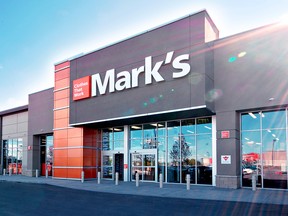Indigenous cooperative restores forests to form ecological corridor in Bahia
NOT LOCKEAN PRIVATE PROPERTY
Story by Mongabay • By Sibélia Zanon

Indigenous cooperative restores forests to form ecological corridor in Bahia© Mongabay
“Our Atlantic Forest has several very important living beings, species that are already endangered and that we need to bring back,” says the Pataxó Matias Santana, president of the Foresters and Reforesters Work Cooperative of the Pataxó Boca da Mata Indigenous village (Cooplanjé), in the south of Bahia, Brazil. “We created the work cooperative to bring jobs to the community, to the family members.”
From 2018 until this year, Cooplanjé worked on restoring 210 hectares (519 acres) of degraded Atlantic Forest areas to increase forest connectivity between the Monte Pascoal National and Historical Park — the first piece of land sighted by Portuguese colonizers — and the Pau Brasil National Park, also integrating the Barra Velha Monte Pascoal Indigenous Territory of the Pataxó ethnic group.
“It was the first time that BNDES financed an AFS [agroforestry system] project in the Atlantic Forest biome,” says Marcos Lemos from the Natureza Bela Environmental Group, a project partner of the Pataxó. Fifty hectares (123 acres) out of 210 were restored within the Boca da Mata village. “We use this AFS as a restoration strategy for Monte Pascoal.”
In addition to the productive agroforestry system forming a kind of green belt sorrounding the reforested area, avoiding the entry of fire outbreaks, it is a way to strengthen the survival of Indigenous communities. “The conservation unit has an overlap with the communities of the Barra Velha of Monte Pascoal Indigenous Territory, which consists of 16 villages surrounding the park,” explains Lemos.

Indigenous cooperative restores forests to form ecological corridor in Bahia© Mongabay
Maintenance work in the restored area around the Pau Brasil National Park, in southern Bahia. Image courtesy of Natureza Bela Environmental Group.
Before the colonization
“Today I imagine that we have about 2,000 hectares [4,942 acres] or more going through a restoration process in the Monte Pascoal-Pau Brasil Ecological Corridor, most of them concentrated on the edges of the parks,” says researcher Paulo Dimas Rocha de Menezes from the Federal University of Southern Bahia.
Since 2005, restoration projects have collaborated to form the ecological corridor, which aims to connect the forest, contributing to the gene flow of animals and plant species and also to implement economic activities that benefit the people of the region.
“We have a history of deforestation and occupation of this region that was exclusively logging, first removing the Atlantic Forest and then entering with pastures,” says Lemos. “We are coming with a whole set of actions and institutions to maintain what exists and advance in preservation, considering that we are in a region with three national parks and we also have the Abrolhos Marine Park, which is influenced by these recharge areas.”
One of the largest remnants of Brazilwood forests (Paubrasilia echinata) survives in this region of water relevance and rich biodiversity. Near Monte Pascoal National Park, in a settlement of the Landless Workers Movement, the largest specimen of Brazilwood in the country was found in 2020, with an estimated age of 600 years and a circumference of more than 7 meters (23 feet).
The restoration of the region, called Discovery Coast, uses native species, which already covered the Bahian soil before the arrival of Portuguese colonizers. “We work with 132 endemic species and try to restore what used to be our flora. And here I could mention pau-brasil, ipê, conduru, jacaranda — species that we don’t find anymore,” says Lemos.

Indigenous cooperative restores forests to form ecological corridor in Bahia© Mongabay
Delivery of tools for the cultivation of agroforestry systems and firefighting equipment to the Pataxó community around the Monte Pascoal National and Historical Park, in southern Bahia. Image courtesy of Natureza Bela Environmental Group.
History of destruction
Besides conservation units and Indigenous villages, the region, also known as the Mosaic of Protected Areas of the Extreme South of Bahia (Mapes), includes private lands and suffers strong pressure from the use of native Atlantic Forest timber, usually acquired illegally.
“The devastation in the extreme south of Bahia is very recent,” says Dimas. “The first stretch that Europeans occupied on the coast was the last to be settled because colonization was forbidden here when they discovered Minas Gerais.”
To protect the gold discovered in the 17th century in Brazil’s interior, settlers were prohibited from the north of Espírito Santo to the south of Bahia. The Indigenous people there served as a shield, preventing non-Portuguese from entering the mining region.
In the 1880s, the construction of the Bahia-Minas Gerais Railroad exacerbated deforestation, which, followed by the agricultural fronts, intensified with the paving of the BR-101 highway in the 1970s.
“With the incentive of the military dictatorship, more than 200 sawmills were installed here and they destroyed the forest in 20 years,” says Dimas. “By the 1990s there was almost no forest left, except for what was later transformed into national parks.
If some accuse the Indigenous people of deforesting the area, experts say their use of wood for handicrafts is irrelevant compared with the region’s history of devastation.
“Our history proves that it is not them. They are the ones who suffer the most and are exploited even today in this issue of wood extraction,” says Lemos. “It is not so frequent anymore, but there is still an inhumane exploitation for the man who cuts this wood, because it is done in a handmade way and sold at very low prices, which comes to be a degradation of the human condition.”

Indigenous cooperative restores forests to form ecological corridor in Bahia© Mongabay
Nursery for forest restoration of the Cooperative of Foresters and Reforesters of the Pataxó Indigenous village Boca da Mata (Cooplanjé). Image courtesy of Natureza Bela Environmental Group.
Conflicts with farmers
In recent years, Cooplanjé and the productive agroforestry systems have emerged as an alternative to the use of wood in the Pataxó territory.
“Several families have left the extraction and processing of wood for restoration and agroforestry,” says Paulo Dimas. “If we had more resources, the ideal would be to take all the families out of this activity and turn them into forest-living families.”
Despite the advance, the Pataxó people live in a situation of constant conflict with ranchers. “Here in the territory of Barra Velha, near the Monte Pascoal Park, this area that the [Indigenous] community entered is a demarcated area that has already been ratified, but today it is occupied by ranchers,” says Santana. “We have already had a dispute with the government and with Funai to pay for the property that the ranchers have on the land and to liberate our territory, but it was never paid. So the community makes the claim in this way, retaking the area.”
According to Paulo Dimas, the amount of land in possession of the Pataxó in the Barra Velha do Monte Pascoal Indigenous Territory is very restricted. “They have the right here to more than 50,000 hectares (123,553 acres) of land already demarcated and they are in possession of 9,000 hectares (22,240 acres). With this, they cannot maintain traditional activities and have to live on tourism, trade or handicrafts.”
Santana wanted to keep the 80 families who worked on the BNDES-funded restoration project within Cooplanjé, but it was not possible due to a lack of new projects. At the moment, only five families remain working in the cooperative.
“Our plan is to seek partners and funders directly, so we can have an independent Indigenous organization. We are looking for other partners so that we can bring jobs into the community,” says Santana. “Now we are happy because we are building a partnership for seed delivery and we are also partnering with a nursery in São Paulo to produce seedlings.”
Banner image of maintenance work in the restored area around the Pau Brasil National Park, in southern Bahia, Brazil. Image courtesy of Natureza Bela Environmental Group.
This story was reported by Mongabay’s Brazil team and first published here on our Brazil site on Nov. 10, 2022.
This article was originally published on Mongabay
















